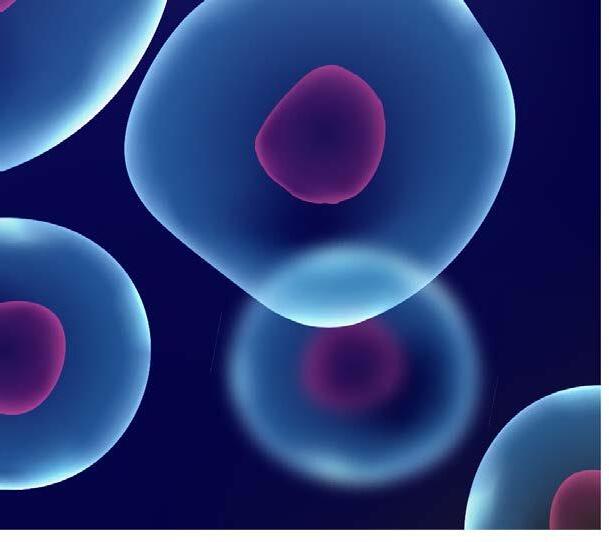Y

We are proud to respond to our role of pioneers in rejuvenation and longevity science. Being part of the Clinique La Prairie medical and scientific team since 2002 am well positioned to testify about our scientific advances in the field of longevity.
We acknowledge that the human quest for longevity comes from the understated desire to continue to enjoy life, most of which can only be fully appreciated if our bodies are in an optimum state of health, and without the burden of chronic disease and frailty that comes with the process of ageing.
Longevity science is most effective when its application is inspired by and respects the synergistic and interconnected nature of the biologic levels of the human organism.
The four treatment pillars of Clinique La Prairie represent a synergistic and comprehensive philosophy that governs the application of our longevity medicine.
Our scientific team had the merit to build on empirical evidence, produced at Clinique La Prairie since the last mid-century, in adding new methods of research and of quality control, and lately in expanding our expertise into research sectors that emerged from latest technologies (epigenetics, brain metabolism and others).
Prof Ernst Rietschel, the chairman of the Scientific Committee has followed all the research process since the 90’s, and he is now overlooking the ongoing research, in collaboration with new added dimensions thanks to specialists in neuroscience, genetics, epigenetics, senescence, nutrition and nutrigenomics.
Let’s not forget that, before the global era of human genetics, research at Clinique La Prairie already used genetic tools (knock-out models, array essays to measure gene up-regulation) and unlocked new pathways in immunosenescence.
We’ve been able to link most of the hallmarks of ageing, by providing an underlying mechanism for many of the age-related diseases. Inflammaging can now be described as a two-part biological process that consists of: Immunosenescence – gradual
ageing and therefore loss of the effectiveness of the immune system and Senoinflammation – gradual state of chronic age-related inflammation. Clinique La Prairie has been developing proprietary protocols and treatments such as Cellular Genomic supplements, HP-active booster formulas for example, to aim the complexity of aging mechanisms and functional decline associated with age.
Senolytic medicine is at the forefront of developing a new class of therapeutics intended to selectively eliminate or modulate senescent cells to halt, slow, or reverse age-related disease and restore the damage to a more functionally healthy state. This therapeutic approach could potentially address the root cause of many diseases of aging, such as neurodegenerative disorders or cancer. However, there are still numerous challenges ahead in relation to understanding this complex biological process and vulnerabilities of senolytic treatments.
The challenge of Clinique La Prairie and its Scientific Committee is to bring the latest technology and research together with our already existing scientific background and holistic approach of longevity and rejuvenation. We can count on a great ambition to continue pioneering in the understanding and in the search for solutions in longevity.
Dr. Heini – Medical Director of Clinique la Prairie
A note from Dr.Heini, Medical Director of Clinique La Prairie
How
to maintain a healthy brain across lifetime
Isabel García, Genetics and Prof. Bogdan Draganski, NeuroscientistResearchers refer to them as super-agers. Whilst some individuals reach the age of 90+ in good physical and brain health, the majority shows declining cognitive and physical performance that further deteriorate with increasing age. The question that arises here is, what factors create this disparity in the way that ageing shapes brain and bodily health? Can we separate the two or is the embodiment of a healthy brain necessary to keep us physically fit and vice versa?
Most neuroscientists agree that four (among other) lifelong factors pose a substantial threat to brain health. These are cardiovascular risk factors, sleep problems, dietary risks, and sedentary behaviours.
You have probably heard the sentence “what is good for the heart is good for the brain”. Cardiovascular risk factors, namely hypertension, abdominal obesity, type 2 diabetes mellitus, and dyslipidemia are main causes of stroke 1. They also confer an

elevated risk of suffering Alzheimer’s disease and other dementias 2. Acting individually or in clusters, they can compromise the cerebral blood flow, reducing the supply of oxygen and nutrients to the brain cells.

Sleep is fundamental for brain function, and sleep problems might affect the capacity of our brain to remove cellular metabolic waste 3. Sleep apnea, a particular form of sleep disturbance, increases the risk of suffering stroke and vascular dementia, and it is associated with lower performance in memory and attention 4,5.
Nutrition has strong effects on our bodies and brains. Adding an excessive amount of salt, eating red processed meat frequently (e.g., french saucisson or spanish chorizo), and cutting the intake of fruits and vegetables are dietary risks that account for 6-12% of cases of stroke each6. At the same time, studies have shown that adherence
to the Mediterranean diet (which is characterised by a high consumption of whole grains, fruits, vegetables, legumes, fish, and olive oil) has been related to better brain health and cognitive performance 7.
Finally, sedentary behaviours, such as TV watching, account for 2% of cases of stroke1) and have also been related to poorer cognitive function over time. Physical activity, on the other hand, seems to have multiple positive effects for brain health, reducing the risk of vascular-related neurodegeneration and ameliorating cognitive decline in late adulthood 8,9.
Ageing is not a synonym of frailty or loss of autonomy. Preventing cardiovascular risk factors and sleep problems, and avoiding dietary risks and sedentary behaviours can help avert cognitive impairment and neurological disabilities. With a healthier lifestyle we might get closer to building a society where super-agers become the norm.


ARTICLE
Pharmacogenetics in service of Longevity
 Dr. Goranka Tanackovic, PhD CEO Gene Predictis
Dr. Goranka Tanackovic, PhD CEO Gene Predictis
According to a recent study, medicines are responsible for more than a third of the improvement in life expectancy observed from 1990 to 2015; this makes them an extremely important contribution factor for longevity. However, increased use of medicine also brought to evidence an increased number of adverse drug reactions. According to US Food and Drug Administration, adverse drug reactions are 4th leading cause of death in developed countries - ahead of pulmonary disease, diabetes, AIDS, pneumonia, and automobile accidents. Almost one third of hospital admissions in Europe result from adverse events caused by drugs. Thus, an important challenge is determining which drug and which dosage of the drug correspond to an individual needs.
Already in 1950s it became obvious that different individuals respond to drugs in a different way and that this response is in a large part determined by genetics. This led to birth of Pharmacogenetics in 1959, a discipline that studies the role of the genetic variants in drug response. In our body, drug metabolism (the absorption, distribution, activation and elimination of drugs) is mediated by enzymes and transporter proteins that are encoded by our genes. Diverse common genetic variations present in those genes yield enzymes and transporters of diverse efficacy. As a consequence, one person might respond well to a drug, the other one not at all, while the third one will mostly suffer adverse effects and needs rather a substitute medication.
The important technological and scientific developments over the last decades, notably sequencing of the human genome and all subsequent large-scale studies allowed by this accomplishment, pawed the way to personalized and precision medicine. The promise of precision medicine is to treat each individual, each patient according to its own capacities to metabolize drugs; this promise is getting fulfilled our-days. The international Clinical Pharmacogenetics Implementation Consortium (CPIC) reports today almost 450 actionable drug-gene interactions that are being implemented worldwide. This list of medications with pharmacogenetic indications
include commonly used drugs such as: painrelief drugs (ex. morphine), anticoagulation drugs or blood thinners (ex. clopidogrel and warfarin), cholesterol-lowering drugs (ex. diverse statins), anti-depressants (ex. diverse selective serotonin reuptake inhibitors, SSRIs), anti-epileptics (such as carbamazepine), anti-cancer drugs (ex. tamoxifen), and so on.

Studies indicate that up to 65% of the population is exposed to at least one prescription drug with pharmacogenetic indication, thus the usefulness of pharmacogenetic testing is no longer to be proven. The inappropriate drug treatment can be not only ineffective, but also dangerous. As example, anticoagulant clopidogrel is ineffective in one third of patients. The administered substance is inactive and undergoes a two-step transformation before becoming an active metabolite in human body. The activation is mediated by an enzyme - the cytochrome P450 CYP2C19; nevertheless, almost 30% of the population carries genetic variations in the gene encoding for this enzyme that affect its function. The decrease or absence of P450 CYP2C19 activity prevents the formation of active metabolites, rendering clopidogrel treatment ineffective and increasing the risk of cardiovascular events.
The most recent studies demonstrate that over 95% of individuals carry at least one actionable pharmacogenetic variant that make their body process drugs in a non-standard way; thus, preemptive pharmacogenetic testing and knowledge of these variants can improve drug dosage while reducing the risk of adverse drug effects. Pharmacogenetic test Cypass ®, developed by Gene Predictis laboratory, allows to select for safer and more effective drug regimens to improve
treatment outcomes and reduce adverse effects. It is based upon proprietary algorithms and respects international guidelines, such as those of CPIC. At present, it is available for clients of Clinique La Prairie that is as always as forefront of longevity treatments.

 Dr. Goranka Tanackovic
Dr. Goranka Tanackovic
ARTICLE N°3
Chronological vs biological aging
Although chronological age remains the strongest risk factor for aging-related death and diseases, uncontestably the rate of aging in people is variable. Thus, chronological age is not a precise and accurate marker of aging, but rather a rough evaluation index in the aging process. Therefore, aging is not only dependent on the process of time. This observation leads to the necessity of distinguishing chronological aging from a more relevant indicator, the biological aging. Biological aging is a parameter for evaluating the functional status of the individual more representatively of the true degree of aging than chronological aging.
The interest of the pace of aging

The biological aging provides a kind of point-in-time snapshot of physiological integrity of an individual.
But, by using it, we can determine a useful third parameter combined with the biological aging, the pace of aging. The interest of determining it consists in capturing longitudinal change in human physiology. Knowing the rate of aging is important for correlating aging with survival and measuring the effect of rejuvenation intervention.
Aging does not only matter for old people
Although much research on aging has been performed, study human aging in young individuals
is theoretically an interesting issue as it is possible to determine when they are diverging in their aging trajectories. As demonstrated recently, young adults age at different rates and accelerated aging in young adults was inversely correlated with their physical and cognitive functions. Thus, studying the young and not only the old in geroscience represents an important avenue for the prevention of age-related disease through antiaging interventions.
How can we determine the biological aging and the pace of aging
To determine the biological age and the rate of aging of an individual, some well selected biological

How artificial intelligence can help us in patient assessment and revitalization
Dr. Silvio Folli, expert in pharmacology, nutrition and longevity
features are required and called biomarker or more simply, marker. Blood markers, epigenetics markers and physical condition markers are all examples of potentially usable biological markers for determining the biological age. As defined by Baker and Sprott in 1988, ‘‘A biomarker of aging, is a biological parameter of an organism that either alone or in some multivariate composite will, in the absence of disease, better predict functional capability at some late age, than will chronological age’’. Due to the complexity of the aging process, no such single measurement of a true specific biomarker of aging has been identified, despite more than 40 years of research in this quest. Thus, the scientific consensus is that multiple biomarkers must be considered to predict with enough accuracy and precision agerelated outcomes, because together, they can be more representative to capture the different and multiple complex aspects of aging. At this time, it has been shown that composite biomarkers are better biomarkers of aging than any single biomarker in predicting age-related outcomes. This demonstrated that a composite of biomarkers is a more reliable alternative than searching for an elusive single marker of aging.
What does Artificial Intelligence have to do with all that

The use of composite biomarkers in these kinds of studies require complex global mathematic and
informatics analysis to help building accurate models in computer called algorithms for determining biological age and pace of age. In this context, artificial intelligence algorithms are particularly interesting, because they can identify relevant patterns within complex, non-linear data, even if molecular and cellular mechanisms are not known or well understood. Clinique La Prairie is convinced that artificial intelligence can exert a deep impact on the current monitoring of health in a near future. The clinic is currently active in Artificial Intelligence projects to develop algorithms in several area associated to aging, most importantly for the identification of aging biomarkers, determination of biological and pace age.
 Dr. Silvio Folli
Dr. Silvio Folli
ARTICLE N°4
Improving Epigenetic Age Through Actionable Lifestyle Factors


Epigenetic age is a new measure that reflects premature aging. It has been developed in recent years by studying specific biomarkers located directly on the DNA. These markers change during the aging process and control genetic expression, hence the term “epigenetic”. Interestingly, epigenetic age, in particular the difference between epigenetic and chronologic ages, is strongly associated with mortality and many chronic diseases of old age, such as cardiovascular disease, cancer, cognitive decline, etc. We are currently witnessing a boom in the scientific literature of studies related to epigenetic age. Indeed, from a methodological

point of view, epigenetic age can be used as a proxy for mortality, thus providing a new solution to answer questions related to mortality risk without the need to set up long cohort studies involving many patients during years. It is now established in the scientific community that epigenetic clocks are closer to the actual aging process than any other biomarker, opening a new era in longevity science.
What lifestyle factors most influence epigenetic age?
Epidemiological associations from the scientific literature show that smoking is one of the most
important factors impacting epigenetics, and such tobacco-induced changes in the epigenome profoundly affect epigenetic age. Epigenetic levels of the AHRR gene - a gene involved in the detoxification of chemical compounds and which is strongly influenced by smoking - can predict, among other things, the development of cardiovascular disease, as well as mortality. Smoking cessation is associated with the reversal of some of these epigenetic marks and ex-smokers demonstrate a lower epigenetic age than current smokers.
Cumulative lifetime stress is also among the most important factors negatively influencing epigenetic age. Stress involves the hypothalamic-pituitaryadrenal axis, leading to the production of cortisol, which has been shown to have epigenetic effects. The origins of stress can be multiple, such as work-related stress or physiological stress (e.g. metabolic stress). Stress mitigation treatments such as intensive relaxation have been shown to improve epigenetic age.
Alcohol consumption at any level has also been associated with accelerated epigenetic aging. Numerous epigenetic changes are indeed produced by alcohol consumption, particularly in genetic pathways that regulate brain
neurotransmitters - such as the GABA systeminvolved in alcohol dependence. The epigenetic acceleration of ageing caused by alcohol can be reversed after one year of abstinence, as shown in a recent study.
Among other protective factors for epigenetic age, we find associations with sleep quality (independent of sleep duration), and physical activity, especially when there is a mixture of aerobic and anaerobic activities. With respect to nutrition, the Mediterranean diet – including large amounts of vegetables, fruits, whole grains, olive oil, and limited amounts of red meat and sugar – is also associated with a lower epigenetic age.
In conclusion, the epidemiological evidence for healthy lifestyle factors is supported by recent findings on epigenetic age. These factors, including nutrition, stress management, physical activity, sleep and substance management, are the focus of Clinique La Prairie's rejuvenation programs.
Dr. Semira Gonseth Nusslé, Co-founder, Chief Medical Officer and Dr. Sébastien Nusslé, Scientist and founder at GenKnowMe Dr. Sébastien Nusslé Dr. Semira Gonseth NussléARTICLE N°5
Unlocking stem cells mediated rejuvenation
Prof E. Rietschel, Expert immunology and Christian Alexander

It is an old dream of human mankind to attempt to delay the process of aging or even promote rejuvenation.
These thrilling findings and their dramatic implications for the biology of aging have initiated a race to identify and characterize human blood factors of regeneration. Clinique La Prairie has joined this endeavor and, in 2018, its scientific team came up with the evidence-based concept that fetal hemoglobin (HbF) represents a candidate for a natural rejuvenating factor.
Fetal Hemoglobin (HbF) and Stem Cells
The function of hemoglobin is to bind and transport molecular oxygen within the body to life-sustaining
regions and organs, including the brain. Fetal hemoglobin (HbF) is known to bind O2 with a higher affinity than adult Hb (HbA). HbF is, therefore, capable of delivering O2 to microcapillaries and tissue areas, where oxygen is normally in scarce supply. In such areas, stem cells reside.
Stem cells appear to strongly promote regeneration and healthy aging. If this capacity of stem cells deteriorates, organs lose functionality and start aging. However, if stem cells are activated, tissue performance is restored and augmented – it is rejuvenated.
Stem cells are known to be activated and recruited by biochemical reactions involving molecular oxygen.
Thus, the CLP scientific team hypothesized that in the mouse system (and mammalians in general), stem cells are activated and recruited by a mechanism involving HbF- (and not HbA) mediated delivery of O2 into the stem-cell containing tissue niches of low oxygen tension.
Generation of HbF in vivo
Based on these data and considerations, it would be highly desirable to translate these data to the human system and to apply HbF to humans in order to achieve rejuvenation. A more realistic way would be to generate HbF in vivo , e.g., by converting the abundantly present HbA to an HbFlike structure (“Neo-HbF”), which should possess a conformation comparable to that of HbF and thus express high affinity for O2
The CLP scientists have subsequently devised a safe and effective procedure - involving a proprietary production of a solution with key extracts from natural sources – allowing NeoHbF to be generated in vivo . This procedure was first tested in a lab and it was proven that indeed this treatment leads to neurogenesis, improved cognitive function, mental fitness and also enhanced resistance to stress and depression in mice. Subsequently, the procedure was applied as part of the clinic’s rejuvenation program in the form of a daily booster in the liquid format administered orally.
In summary, the conception of the rejuvenating power of HbF is to our knowledge unique worldwide. In fact, CLP has been working on HbF for decades. The modern conception of the rejuvenating force of HbF, therefore, appears as a splendid confirmation of the previous far-sighted perceptions of Dr. Niehans.
 Prof E. Rietschel
Dr.
Prof E. Rietschel
Dr.
Numerous positive psychological factors play a central role throughout the life span in healthy development, resilience, and ageing, with benefits observed across numerous domains of health, function, and longevity. Among this broad range of potentially beneficial factors, optimism is among the most consistent to show numerous associations with positive health outcomes.


Viewed primarily as a dispositional trait, optimism is defined as a highly generalized expectancy that good things rather than bad things will happen. This generalized positive expectancy pertains more or less to the individual’s entire life space and is expected to occur without particular regard to the person’s actions.
Research has shown consistent health benefits associated with optimism and positive orientation to life populations




of optimism among older people in general, and exceptionally old people in particular. Increasing age is often associated with a rising frequency of depression and a growing burden of comorbidity. Both these important aspects of aging are likely to play important confounding roles in understanding the relationship of optimism to health and longevity.
Thus, while survival benefits have been consistently associated with optimism measured in the past as well as current optimism among adults older than 65 years, it remains largely unknown if optimism among people older than 85 years continues to predict improved survival. In order to examine this issue, we performed in our a prospective
Does an optimistic attitude to life prolong life expectancy among people aged 85 and 90 years old?
Armand Aaron Cohen, Internist and Geriatrician
study to examine the 5-year mortality associated with current levels of optimism measured at ages 85 and again at age 90 among a representative cohort of community-dwelling people **. Specifically, we aimed to test the hypothesis that optimism continues to predict survival despite increasing age.
We used a seven-item optimism questionnaire developed and validated by the University of Groningen, the Netherlands:



1. “I often feel that life is full of promises”;








































































































2. “I still have positive expectations concerning my future”;



3. “there are many moments of happiness in my life”;





































































































































4. “I still make future plans”;
5. “happy laughter often happens”;













6. “I still have many goals to strive for”;







7. “most of the time I am in good spirits”.
We found that optimism measured at ages 85 and 90 is still significantly associated with improved 5-year survival from 85-90 and 9095 respectively. In the "high optimism" group at age 85, the probability to be alive after 5 years was 78%, compared to only 55% among the "low optimism" group. At age 90 the probability to be alive after 5 years was 72% in the "high optimism" group compared to only 45% in the

"low optimism" group. The association between increasing optimism and improved survival was irrespective of rising comorbidity and independent of depression. It yet remains to be discovered whether or not therapeutic interventions aimed at improving levels of optimism among older people may influence resilience and health.





 Dr. Armand Aaron Cohen
Dr. Armand Aaron Cohen
OTHER SOURCES AND REFERENCES
Article “Improving Epigenetic Age Through Actionable Lifestyle Factor”
1.Oblak, L., van der Zaag, J., Higgins-Chen, A. T., Levine, M. E., & Boks, M. P. (2021). A systematic review of biological, social and environmental factors associated with epigenetic clock acceleration. Ageing research reviews, 69, 101348.
2.Yang, Y., Gao, X., Just, A. C., Colicino, E., Wang, C., Coull, B. A., ... & Baccarelli, A. A. (2019). Smoking-related DNA methylation is associated with DNA methylation phenotypic age acceleration: The veterans affairs normative aging study. International journal of environmental research and public health, 16(13), 2356.
3.Harvanek, Z. M., Fogelman, N., Xu, K., & Sinha, R. (2021). Psychological and biological resilience modulates the effects of stress on epigenetic aging. Translational Psychiatry, 11(1), 1-9.
4.Pavanello, S., Campisi, M., Tona, F., Dal Lin, C., & Iliceto, S. (2019). Exploring epigenetic age in response to intensive relaxing training: a pilot study to slow down biological age. International journal of environmental research and public health, 16(17), 3074.
5.Luo, A., Jung, J., Longley, M., Rosoff, D. B., Charlet, K., Muench, C., ... & Lohoff, F. W. (2020). Epigenetic aging is accelerated in alcohol use disorder and regulated by genetic variation in APOL2. Neuropsychopharmacology, 45(2), 327-336.
6.Zindler, T., Frieling, H., Fliedner, L., Veer, I. M., Neyazi, A., Awasthi, S., ... & Friedel, E. (2022). How alcohol makes the epigenetic clock tick faster and the clock reversing effect of abstinence. Addiction Biology, 27(5), e13198.
7.Carroll, J. E., Irwin, M. R., Levine, M., Seeman, T. E., Absher, D., Assimes, T., & Horvath, S. (2017). Epigenetic aging and immune senescence in women with insomnia symptoms: findings from the Women’s Health Initiative Study. Biological psychiatry, 81(2), 136-144.
8.Kankaanpää, A., Tolvanen, A., Bollepalli, S., Leskinen, T., Kujala, U. M., Kaprio, J., ... & Sillanpää, E. (2021). Leisure-time and occupational physical activity associates differently with epigenetic aging. Medicine and science in sports and exercise, 53(3), 487.
9.Kim, Y., Huan, T., Joehanes, R., McKeown, N. M., Horvath, S., Levy, D., & Ma, J. (2022). Higher diet quality relates to decelerated epigenetic aging. The American Journal of Clinical Nutrition, 115(1), 163-170.
Article "How to maintain a healthy brain across lifetime"
1.GBD 2019 Stroke Collaborators. Global, regional, and national burden of stroke and its risk factors, 1990-2019: a systematic analysis for the Global Burden of Disease Study 2019. Lancet Neurol. 2021;20(10):795-820.
2.Yu JT, Xu W, Tan CC, et al. Evidence-based prevention of Alzheimer’s disease: systematic review and meta-analysis of 243 observational prospective studies and 153 randomised controlled trials. J Neurol Neurosurg Psychiatry. 2020;91(11):1201-1209.
3.Lewis LD. The interconnected causes and consequences of sleep in the brain. Science. 2021;374(6567):564-568.
4.Culebras A, Anwar S. Sleep Apnea Is a Risk Factor for Stroke and Vascular Dementia. Curr Neurol Neurosci Rep. 2018;18(8):53.
5.Leng Y, McEvoy CT, Allen IE, Yaffe K. Association of Sleep-Disordered Breathing With Cognitive Function and Risk of Cognitive Impairment: A Systematic Review and Meta-analysis. JAMA Neurol. 2017;74(10):1237-1245.
6.Feigin VL, Nichols E, Alam T, et al. Global, regional, and national burden of neurological disorders, 1990–2016: a systematic analysis for the Global Burden of Disease Study 2016. Lancet Neurol. 2019;18(5):459-480.
7.McEvoy CT, Guyer H, Langa KM, Yaffe K. Neuroprotective Diets Are Associated with Better Cognitive Function: The Health and Retirement Study. J Am Geriatr Soc. 2017;65(8):1857-1862.
8.Najar J, Östling S, Gudmundsson P, et al. Cognitive and physical activity and dementia: A 44-year longitudinal population study of women. Neurology. 2019;92(12):e1322-e1330.
9.Northey JM, Cherbuin N, Pumpa KL, Smee DJ, Rattray B. Exercise interventions for cognitive function in adults older than 50: a systematic review with meta-analysis. Br J Sports Med. 2018;52(3):154-160.
Article "Optimism and Longevity"
1.*Optimism’s Explicative Role for Chronic Diseases. Front. Psychol., 02 March 2016
2.**Optimism and Longevity Beyond Age 85, The Journals of Gerontology: Series A, Volume 76, Issue 10, October 2021, Pages 1806–1813
All the writers of this report are members of the Scientific Committee of Clinique La Prairie.
Questions or want to know more?
Contact us on info@laprairie.ch
Read more articles in our Longevity Blog on cliniquelaprairie.com





